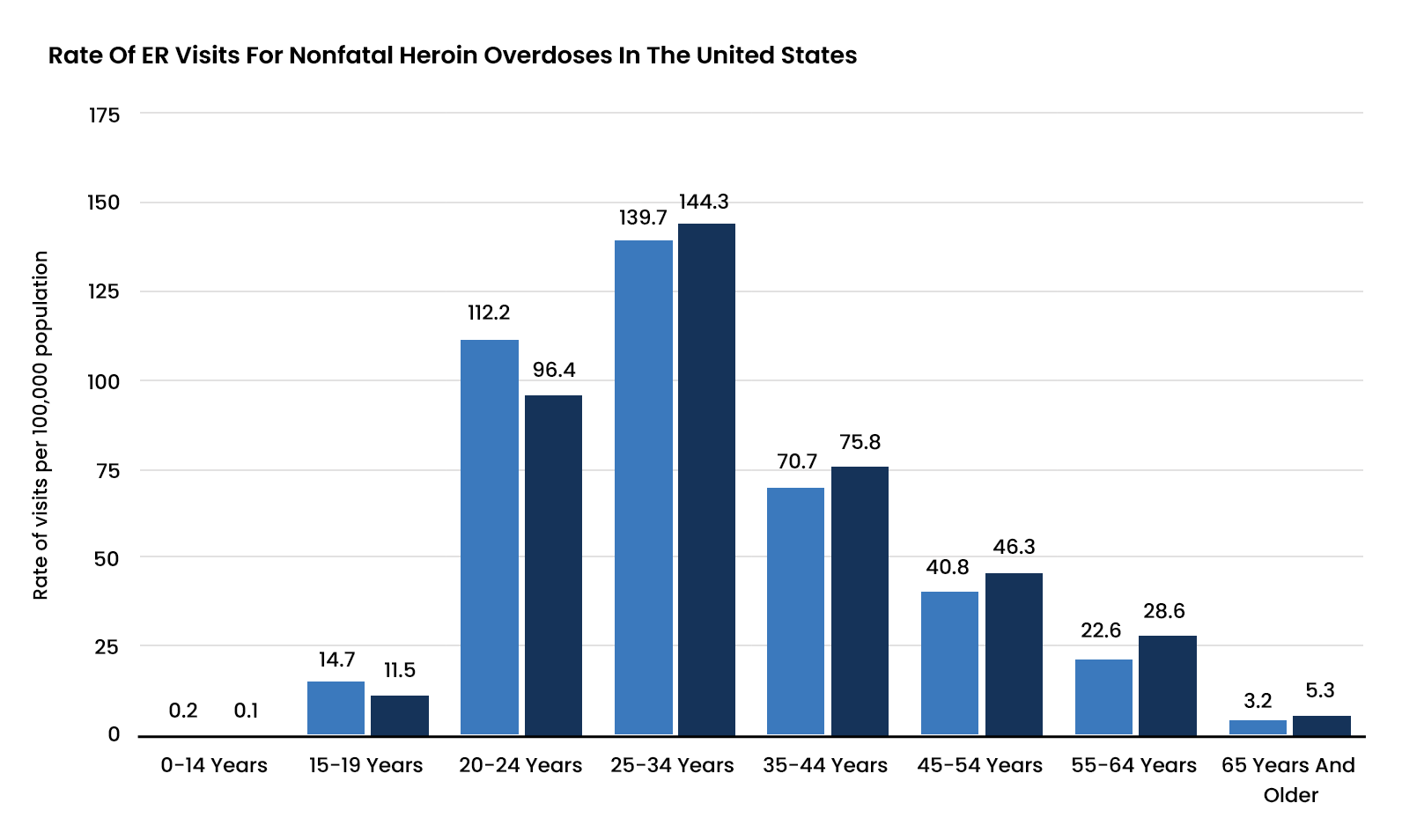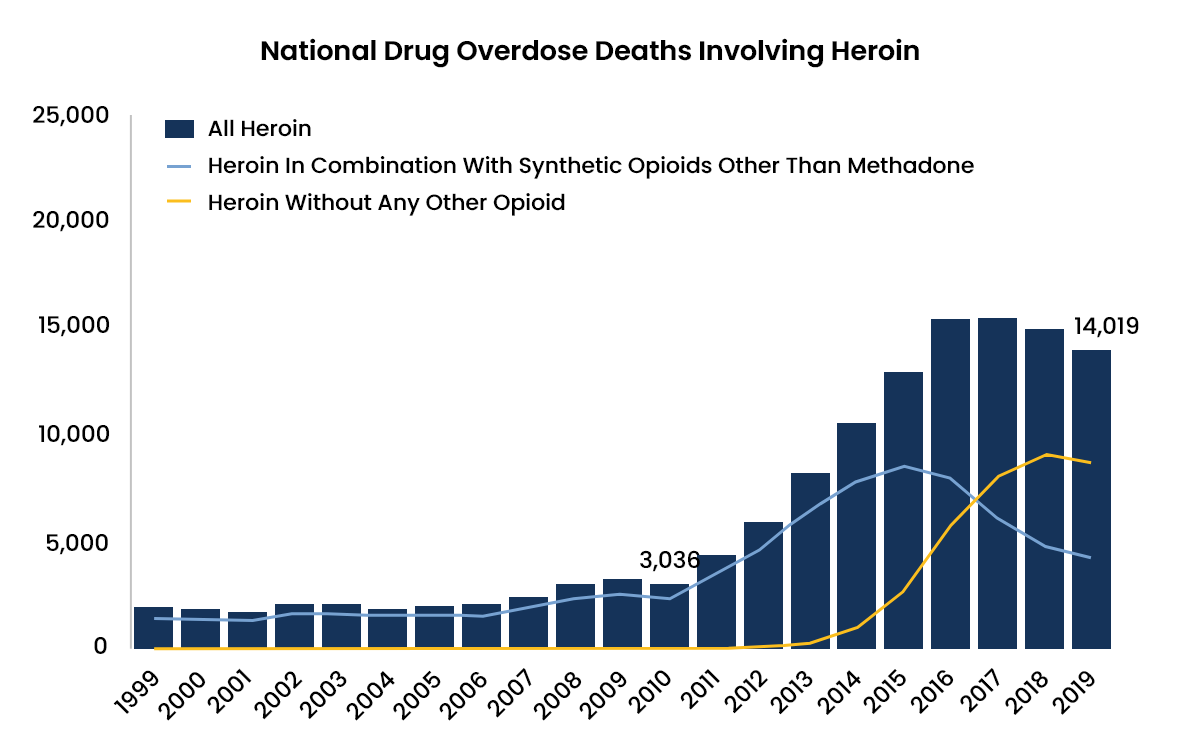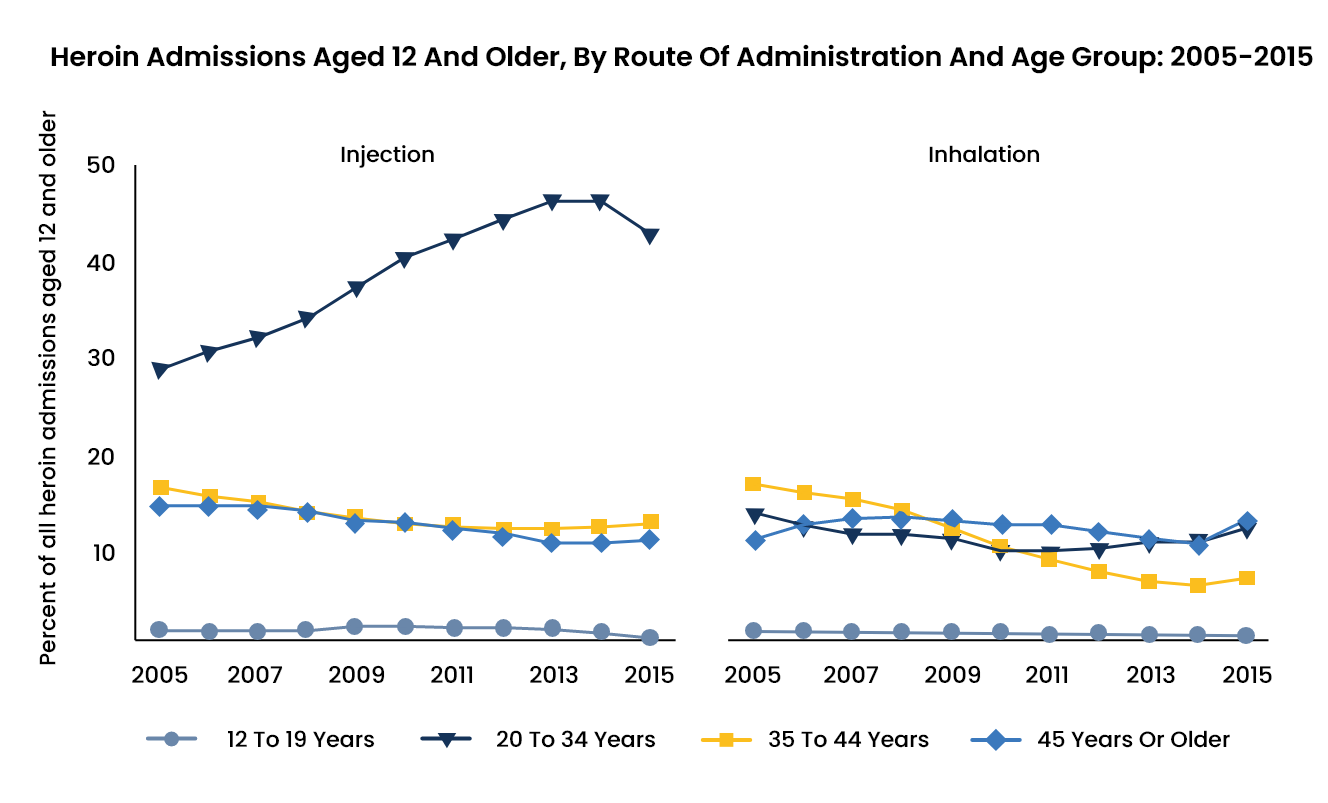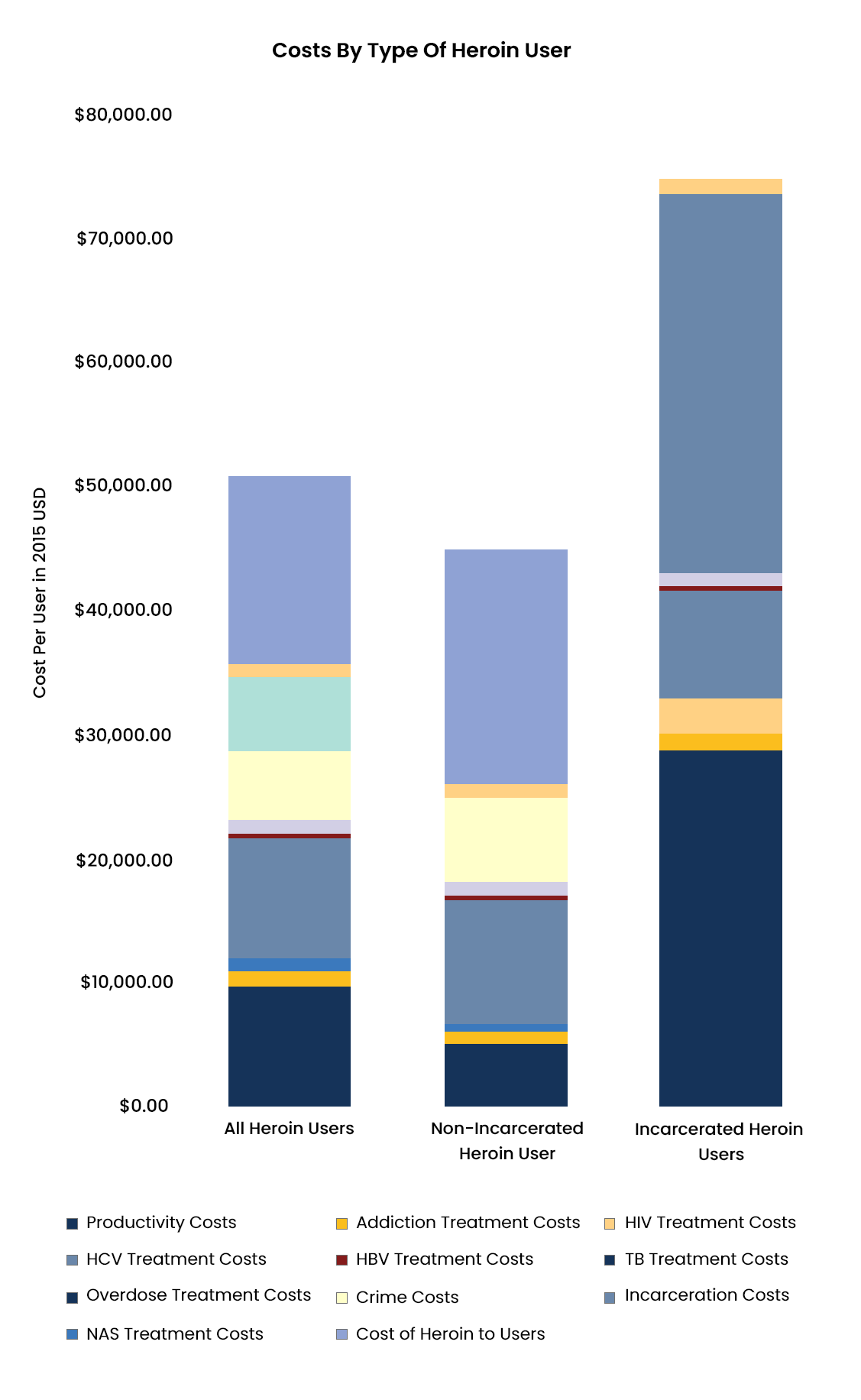Past years’ statistics illustrate the magnitude of heroin-related problems in the US
Heroin Abuse Statistics
Substance use disorder
- Alcohol abuse statistics
- Amphetamine abuse statistics
- Cannabis abuse statistics
- Cocaine abuse statistics
- Heroin abuse statistics
- Illicit drug abuse statistics
- Inhalant abuse statistics
- Methamphetamine abuse statistics
- Opioid abuse statistics
- Prescription Drug abuse statistics
- Tobacco abuse statistics
Heroin abuse statistics | Table of Contents
Heroin Abuse
Heroin is an opioid drug produced from morphine, a natural substance extracted from the seed pods of opium poppy plants. Heroin acts quickly by binding to opioid receptors in the brain cells, particularly with those involved in pleasure, pain, heart rate regulation, breathing, and sleeping.
With the rise of opioid use since 1999, the rates of heroin abuse, addiction, and overdose have significantly increased. The statistics provided below illustrate the magnitude of heroin-related problems in the US.
Heroin Abuse Key Statistics
- According to the National Institute on Drug Abuse (NIDA), an estimated 4 to 6 percent of users in 2011 who abused prescription opioids switched to heroin.
- About 80 percent of those who first abused heroin had used synthetic opioids.
- Approximately one-third of those entering opioid use disorder treatment reported heroin as the first drug they used routinely to get high.
- As per the Centers for Disease Control and Prevention (CDC), 45 percent of those who abused heroin were also addicted to prescription opioids.
- The National Survey on Drug Use and Health (NSDUH) reports that 948,000 Americans confirmed heroin use in the past year in 2016.
- During 2016, around 170,000 individuals started using heroin. This was almost twice the number of individuals in 2006 (90,000).

Heroin Overdose Statistics
The number of heroin overdose cases has significantly risen in the last two decades. This increment resulted from the second opioid wave that began in 2010 with overdose cases involving heroin. Heroin is now found in combination with other illicitly produced drugs such as fentanyl, as well.
- As per the Centers for Disease Control and Prevention (CDC), admissions to the emergency room for nonfatal opioid overdose, including heroin, rose by 30 percent between 2016 and 2017.
- In the United States, the rate of emergency room visits for nonfatal heroin overdoses among adults aged 35 to 44 years increased from 70.7 per 100,000 population in 2016 to 75.8 per 100,000 population in 2017.
- Between 2016 and 2017, opioid overdoses, including heroin, rose by 70 percent in the Midwest region.
- The Drug Abuse Warning Network reports a 153 percent increase in the number of ER visits involving opioid overdose, including heroin, between 2004 and 2011.
- Emergency room visits due to heroin abuse increased from 214,432 in 2004 to 258,482 in 2011.
- Cases of an overdose of opioids, including heroin, rose by 30 percent in males and 24 percent in females between 2016 and 2017.

Heroin-Related Death Statistics
A sharp increase in fatal heroin overdoses was recorded in 2010 due to the second wave of the opioid epidemic. As per Our World in Data Records, between 1999 and 2017, 426,218 Americans lost their lives to opioids, including heroin.
- Heroin-involved overdose fatalities had risen from 3,036 in 2010 to 14,996 in 2018.
- Between 2002 and 2013, the number of heroin-related overdose deaths almost quadrupled, with over 8,200 fatalities in 2013.
- According to Our World in Data, death rates by heroin overdoses (measured as the total number of deaths per 100,000 population of all ages) have increased from 0.72 in 1999 to 4.05 in 2015.
- The number of heroin-related overdose deaths marginally decreased in 2018 and 2019 compared to 2017.

Heroin Abuse Recovery Statistics
Major patterns and shifts have been reported in admissions and treatment rates for heroin abuse care. According to the 2005-2015 SAMHSA Treatment Episode Data Set (TEDS):
- The prevalence of admission for primary heroin abuse treatment was 40% lower in 2005 at 104 per 100,000 individuals aged 12 or older relative to 146 per 100,000 population in 2015.
- Fourteen percent of admissions aged 12 years or older were for primary heroin in 2005. This percentage remained reasonably stable between 2005 and 2010, varying between 14 and 13 percent. Nevertheless, the proportion of primary heroin admissions aged 12 and over rose rapidly from 2011 to 2015, reaching 26 percent.
- Primary heroin accounted for 78 percent of all opioid admissions in 2005 and 76 percent in 2015.
- The rates of heroin treatment admissions were between 8 and 833 percent lower in 2005 than in 2015 in all nine Census divisions.
- Alaska, North Dakota, Kentucky, Wyoming, Arkansas, and Minnesota experienced the largest growth of heroin admissions from 2005 to 2015.

Economic Costs of Heroin Abuse
Heroin usage has reached epidemic levels in the United States. The estimated expense of heroin use disorder to society in the United States underlines the need for sustained investment in medical services and non-health-related interventions that minimize the risk of abuse and offer care and assistance to patients to resolve the disorder.
- The cost of heroin use disorder was estimated at $21.9 billion in 1996, and the number rose to $51.2 billion in 2015.
- From the total economic cost of heroin abuse in 1996, productivity losses accounted for approximately $11.5 billion, criminal activity cost accounted for $5.2 billion, medical care cost accounted for $5 billion, and social welfare cost accounted for half a billion dollars.
- The cost of heroin use disorder per person was $50,799 in 2015.
- The weighted cost per treatment for heroin use disorder had increased from $8,036.84 in 2007 to $9,187.08 in 2015.
- The economic cost of the opioid crisis (including heroin) has exceeded $1 trillion between 2001 to 2016. The projected economic burden from 2016 to 2020 was $500 billion.

Recovery Partner Network
We aim to educate and empower. If you feel our library of resources does not cover your specific need, reach out to us, and we would be happy to help.
STATISTICS
© Copyright 2025


